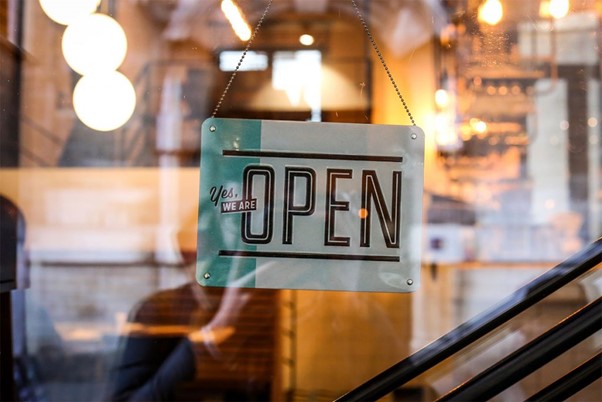As e-commerce sales eat into physical retail numbers, questions about the viability of offline retail abound. Is this ‘Retail Armageddon’? No – but it is a significant shock to the retail ecosystem. A shock that has implications for retailers and brands alike. There is talk that stores must become ‘experiential’ – but what does that mean? Most shoppers, most of the time, don’t want ‘an experience’ when they shop! So, what is the future of physical retail, and how should brands and retailers face up to this difficult challenge?
Pressure on physical retail is pressure on everyone
This might not be Retail Armageddon, but it is a really significant threat to the viability of many stores. Around the world stores are forecast to close. Whichever way you look at it, e-commerce is taking sales, and that means that stores will become less productive as sales channels. That puts pressure on retailers, who will in turn put pressure on suppliers. If there is too much retail space to justify the diminished sales performance, so something has to give.
Brand Value – Experiential Retail to the rescue?
And so we have the idea of ‘experiential retail’. There is lots of talk about the future of physical retail being ‘experiential’ (usually pedalled by companies that sell experiential retail services!). An idea supported by data (often about gen Z) that they love going to stores for an experience, and that retailers need to invest in this. And while there is definitely a role for experience in physical retail, the assumption that this will somehow save physical retail has a few flaws.
How many shoppers actually want an experience?
The first flaw is the idea that lots of shoppers want an experience. They want to hang out in stores and experience the brand. OK. I’ll accept that some shoppers do. In some categories. Some of the time.
The reality is that many (most?) shoppers aren’t looking for what these companies call ‘experience’. A lot of the time, shoppers just want to get their product and go, with the minimum of stress, fuss, and cost. That is the experience that they are looking for (and sadly, an experience that e-commerce delivers with excellence).
Beware hyperbolic headlines about experiential retail
And before you fire back at me some survey that says that ‘70% of Generation Z like to go to stores for an enhanced retail experience’ – read this – and then have a think. Yes, 70% of Generation Z, when asked in a survey, said that they have, on occasion, gone to a physical store to get an enhanced experience. That isn’t the same as them doing 70% of their shopping there for that reason.
So what is the future of physical retail, and what must brands and retailers alike do to master this multichannel reality?
I read a recent article that suggested in its headline that (and I quote ‘E-commerce hasn’t killed physical retail. It’s made it more important than ever’). That’s nonsense. How on earth can that be true? The article argues that physical retail is important because it plays a marketing role. That is true. But that has always been true! But while the hyperbole of the headline risks making the article feel silly, there is a really important core message. Stores have marketing value for your brands. For brands to be successful in a multichannel environment they need to embrace this reality.
The brand value of a store is nothing new
This is hardly new. For a long time, we’ve worked with clients to understand the roles of channels. Even before digital, we worked with a mobile phone company that almost pulled out of one retail channel completely as sales there were tiny. We demonstrated that their influence on future performance was critical – these stores might not have been important in terms of sales numbers, but their role in the purchase journey was critical. Without these stores, sales in other stores would decline.
Stores are marketing and sales channels
The reality is that physical stores have always played a dual role (as indeed can online stores too!) a marketing role and a sales channel. This has always been true. It’s just that now, as for some categories the sales role has diminished, stores have to work doubly hard to add marketing value as their sales value diminishes.
Why is it important to understand the brand value of a store?
So the idea that stores play a marketing role as well as a sales role isn’t new. So why the fuss? Because as sales from physical stores diminish, the way we evaluate the stores performance has to change. Historically most manufacturers haven’t really thought discerningly about the marketing value of the store. Sure they understand that the store has marketing value, in that they spend a load of money in stores on marketing activities. But they haven’t really thought hard enough about the real marketing value that a store can create. They have primarily targeted stores where sales are high and spent their marketing monies in those stores. Big retailers demand more spend, so manufacturers spend more money there. And, because those chains are large, they do indeed have a lot of shoppers, so spending money there isn’t all bad. But it is far from the most effective or efficient way to evaluate a marketing opportunity. Evaluating retail channels value as a shopper marketing vehicle merely by how many sales we get there, or shoppers are in there is a crude measure. It’s akin to choosing your media channel merely on the scale of its viewership. Most media planners would raise an eyebrow at that!
Marketing to shoppers isn’t about ‘experience’. It’s about marketing
Marketing to shoppers isn’t about ‘experience’. It’s about marketing. It’s about understanding your target market and then marketing to them to encourage them to buy your brand. The only experience that we need to deliver is the one that will help us achieve our marketing goal. And do that profitably. So how do we do that?
Brand value – Focus on channels used by your target shoppers
But just because a store has a lot of shoppers doesn’t mean it has high value as a marketing channel. A more important question: Does it have the right shoppers? We worked with Sony in China a while back. They couldn’t understand why they couldn’t drive sales in one of the biggest retailers there. They spent a fortune on displays and in-store marketing, but it wasn’t delivering conversion. Why? Our analysis showed that while the stores did indeed have a lot of shoppers, they weren’t Sony’s target shoppers. They had the wrong shoppers if you like! So, no matter how much money Sony spent, they were never going to convert these shoppers. Sony shifted their spend to other channels, which indexed higher for their target shoppers, and sales rose significantly.
Brand value – Understand what your target shopper is looking for
Just because a shopper goes to a physical store, doesn’t mean that they are seeking an enhanced experience. Research we conducted in the US suggested that there were many reasons for visiting physical stores, including price, promotions, range, and yes an enhanced experience in terms of human contact, touching and feeling the product, and accessing products not available online. Not all shoppers want the same thing from the store.
Even the same shopper wants different things from different categories. Before we assume that stores now need to take on the mantle of ‘experience’, we’d better be clear about what experience those shoppers are looking for! Not all shoppers want ‘experience’ in all categories – retailers/brands need to think carefully about category roles, which shoppers they are targeting, and where the store can add value to that experience.
Just consider a single grocery shop. A shopper might be looking for information in the wine aisle, range in the produce aisle, promotions in the snacks aisle, the best price for milk and advice in the personal care aisle. One size fits all was never an efficient way to run a store. We must work out which shoppers we are targeting and understand what those shoppers are looking for from each store, then deliver that. Sometimes that might be theatre. Sometimes that might be advice. Sometimes its just a tight range of well-stocked products.
Be prepared to pay, but only when there is shopper marketing value
Of course, for retail stores with less sales to be viable, there needs to be some value creation. Retailers will (and should) charge suppliers for value they create: but of course that means retailers need to get better at sharing data (rather than selling it!) and giving access to stores for research purposes, so that brands can effectively evaluate the marketing value of the various touchpoints in the store.
Brand value from the store – Start measuring what happens in the store
The implication of this, of course, is that we need to get better at measuring the impact of the store beyond simply measuring offtake. Surely if the store is a marketing channel, we need to start measuring its marketing impact too! Without this there is a grave danger that we make poor investment decisions, invest in the wrong channels, or worse, invest in heavy promotions to prop up sales, when allowing the sales to flow to another channel would be far more profitable.
Experiential retail has a role to play – but shopper marketing is where it starts
Yes, experiential retail has a role to play. But more importantly the industry needs to really consider its approach to shopper marketing. Shopper marketing isn’t just what we do in a store. Stores are not just places where shoppers buy stuff. Its complicated. We need to understand who our target shoppers are, understand their various purchase journeys, and understand what they are looking for at each step of that journey, and what influences them. Only then can we really make smart decisions about where and how to invest in different channels.
Omnichannel puts pressure on the entire ecosystem of consumer goods. There are more places to invest in marketing. More channels, More touchpoints. More demands on our marketing monies too. It’s not easy. It’s complicated. If you want some help for your brand or team, get in touch now. I’m offering a limited number of free consultations: you can explain your situation and I’ll do what I can to help. Get in touch now to book your free consultation.





